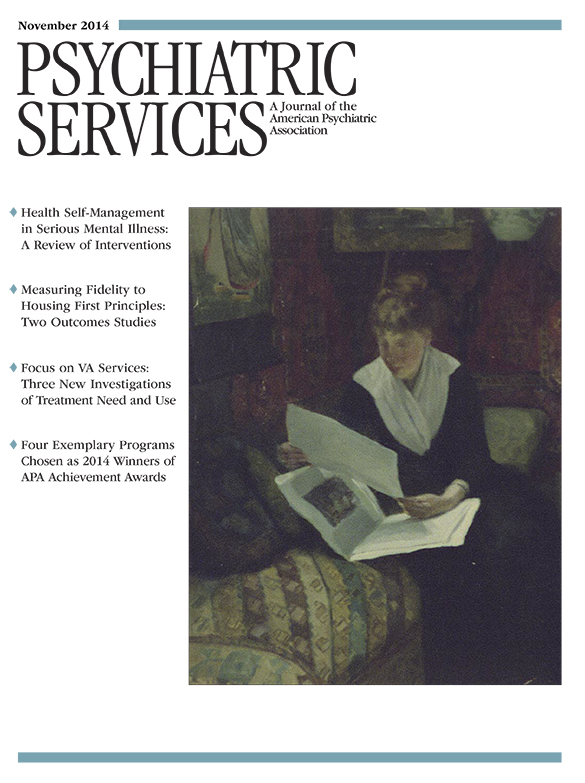Many common behavioral health problems begin before children reach puberty. Evidence is accumulating that early intervention can alter the trajectory of these problems and prevent lifelong struggles for children and families. However, many pediatric primary care physicians are not able to provide adequate evaluation and treatment of behavioral health conditions because they lack training, time, and support. And families may avoid seeking specialty care because they lack access or fear stigma or both. An increasingly popular service model—integration of primary and behavioral health care in the pediatric medical home—offers a solution.
Since 2008, Children’s Community Pediatrics Behavioral Health Services (CCPBHS) has overcome a host of challenges to build such a program and to fulfill its mission statement “to create a financially sustainable, integrated behavioral health service in the pediatric medical home that focuses on providing early access to empirically supported non-pharmacologic interventions (therapy), while simultaneously providing access to pharmacologic interventions.” The services provided by CCPBHS are not meant to replace specialized behavioral health services in the community but to augment and unburden those services by identifying the needs of youths and families in the medical home, providing treatment for youths who can respond to lower-level interventions, providing access to appropriate pharmacologic interventions, and ensuring successful handoffs to higher levels of behavioral health care.
CCPBHS, which is operated by and within the Children’s Community Pediatrics (CCP) network of practices in western Pennsylvania, “embeds” 12 licensed behavioral health therapists in 17 pediatric practices. The therapists work with and are supervised by five child and adolescent psychiatrists. The therapists and psychiatrists work with more than 180 pediatricians to provide integrated care to 188,800 children and their families. In addition, four regional hubs provide services to children affiliated with 18 other primary care practices. In 2013, CCPBHS therapists and psychiatrists provided more than 10,370 behavioral health visits. Initial start-up costs were supported by the Children’s Hospital of Pittsburgh. CCPBHS is now supported entirely by third-party billing and the infrastructure of the pediatric practices. Outcome evaluations indicate that the program has increased and simplified access for families served by the CCP network, improved the breadth and quality of care provided directly by pediatricians, and reduced costs—achieving the “triple aim” of health care reform and serving as a model for pediatric networks and practices across the country.
In recognition of its innovative program that has introduced a culture change across a network of pediatric practices in order to ensure early recognition and treatment of children with behavioral health problems, CCPBHS was selected to receive APA’s 2014 Silver Achievement Award. The award was presented October 30, 2014, at the opening session of the Institute on Psychiatric Services in San Francisco.
Three critical ingredients
Three factors have played a key role in creating and sustaining CCPBHS: an empowered leadership team, integration of care processes in the medical home, and ongoing quality improvement activities.
From the outset, CCP recognized that system change was necessary to integrate behavioral health services within the medical home and to provide linkage to specialized services. Such change required a leadership team that was empowered to reach beyond the traditional administrative, cultural, and clinical boundaries between the primary and behavioral health care systems. All members of the team—administrative, clinical, and family leaders and champions from the mental health and primary care systems—had ownership of the initiative’s success and were responsible for identifying and eliminating barriers to integration. Drawing on the experience of local pilot projects, pediatrician and family focus groups, and national data, the leadership team proposed a clear mission statement. Physicians led the charge, and administrative leaders found ways to overcome multiple institutional, regulatory, payment, and operational challenges. Since 2007, the leadership team has met quarterly. More frequent subgroup meetings address operations, clinical issues, quality improvement, and ongoing performance measurement. The team also continues to work to link CCP network practices with more specialized behavioral health services in order to ensure a warm handoff of children and families to the formal mental health system.
The second key factor, integration of care processes in the medical home, has been pursued on two fronts: integration of clinical care and integration of administrative support. The CCPBHS leadership team did not regard simple colocation of services as sufficient to achieve the culture change needed to fully integrate care. Embedding behavioral health therapists directly in the pediatric practices was deemed the best option. The team identified care pathways for the treatment and referral of children with common presenting concerns. This required reaching consensus on conditions that should be targeted for treatment in the primary care setting and those that should be referred to more specialized care. Pediatric primary care physicians and specialty providers were educated about these care pathways. The pediatric primary care providers were encouraged to refer patients directly to more specialized services if the needed service was clear and to refer patients to the collaborating CCPBHS therapist for treatment of the targeted conditions or if they were uncertain about the diagnosis or need for treatment. To provide transparency in regard to clinical pathways and to create automated processes for referral, a shared medical record was implemented, breaking down one of the most challenging barriers to integrated, coordinated care for families and providers.
Integration of administrative support is also a vital component of CCPBHS’s success. The administrative functions that are needed to support the clinical team are integrated at the practice level. Therapists and psychiatrists are seen as key members of the team within the office. Patients use the same procedures for making both behavioral and primary care appointments. Administrative staff members receive training about behavioral health managed care organizations and know the specific insurance plans for which each provider is credentialed. Thoughtful integration of administrative support ensures a more seamless patient experience of the care process.
The third key ingredient involves ongoing quality improvement activities. The CCPBHS behavioral health therapists are a critical link between the family, the pediatrician, and the psychiatrist. They understand the medical culture and can help pediatricians identify and treat common behavioral health concerns and refer patients with more complex problems. Therefore, training and supervision of the therapists is paramount. They meet with the psychiatrists regularly for administrative and clinical reviews and to discuss the status of their practices and areas for improvement. Pediatricians are also encouraged to identify areas for improvement. As CCPBHS matured, the pediatricians requested more education about interventions that they could provide themselves for common behavioral health concerns, such as the internalizing disorders. A four-part evening educational series for pediatricians was held in the spring of 2011, which addressed identification, nonpharmacologic intervention, pharmacologic intervention, and medico-legal considerations in the treatment of internalizing disorders in primary care. The series was attended by more than 50% of the providers in the network, and more than 75% of those attending stated that they would be more likely to provide an empirically based intervention for depression or anxiety in their office within the next year. A follow-up chart review noted that there was a 50% increase in the use of SSRIs for internalizing disorders within the network.
In addition, CCPBHS is sustained by and thrives on the continuing commitment of practice-level administrators and clinicians. Each pediatric practice identifies a physician and an administrator to help facilitate integration at the practice level. Up to six times a year these two individuals participate in phone consultations with the pediatrician medical director, the psychiatrist medical director, and the lead therapist to review processes, identify educational needs, and provide feedback. According to Abigail Schlesinger, M.D., clinical director of Community-Based Behavioral Health Services for Children’s Hospital of Pittsburgh, “The success of this program is directly attributable to the ongoing teamwork of all the administrators, physicians, therapists, and office staff.”
Outcomes
From the outset, CCPBHS leaders believed that truly integrated processes within the medical home would reduce stigma, increase patient and family engagement, and improve access to empirically supported interventions. As noted above, in 2013, patients made more than 10,370 behavioral health visits to CCP practices that had adopted the integrated model. Attendance rates for these visits are above 90%, compared with national norms of 48%–62% for stand-alone community-based behavioral health clinics. The average age of children who attend these behavioral health visits is ten, which is lower than the average age of youths referred directly to the local behavioral health system. Behavioral health care provided by CCPBHS peaks in the prepubertal years, which is consistent with evidence indicating that many potentially disabling behavioral health conditions have their initial presentations prior to puberty. Patients referred from CCPBHS to a large local specialized behavioral health care center are younger than those referred from other community providers. All of this evidence converges to suggest that CCPBHS is identifying youths early.
The program has had an impact on use of general medical services. In the year after engagement with CCPBHS, children are significantly less likely to have acute care visits to the pediatrician, while continuing to attend their well-child visits. The cost-effectiveness of integrated services is striking. In 2011, the average number of ambulatory treatment visits billed at an affiliated specialized behavioral health provider was 12.5 per pediatric patient, compared with an average of three visits per CCPBHS behavioral health patient. In addition, the average cost per visit is significantly lower in the medical home.
The success of CCPBHS can also be measured by its increased ability to implement systematized screening programs for behavioral health and developmental disorders. Since 2008, CCP has conducted three successful network-wide well-child screening efforts: screening for autism among young children, depression among teenage girls, and postpartum depression among mothers within the first two months of delivery. For the adolescent depression screening, a chart review showed that more than 90% of the target population was being screened with the PHQ-9. Plans to expand the screening effort are in process. “We are most proud of the fact that we met our initial goal of getting children and adolescents early access to evidenced-based interventions. The evidence converges to suggest that we are helping more children and families succeed,” says Dr. Schlesinger.
Recognition of accomplishments
CCPBHS has been so effective that in 2012 the Children’s Hospital of Pittsburgh embarked on an ambitious strategy to extend the model from primary care clinics to specialty clinics within the hospital. CCPBHS has received the Bronze Award for Transitions in Care from the Jewish Healthcare Foundation/Fine Foundation and both the patient care and innovations award from the Hospital Association of Pennsylvania. Data from the CCPBHS have been presented at the 2012 National Behavioral Health and Addiction Conference and the 2012 American Academy of Child and Adolescent Psychiatry Conference. CCPBHS’s medical director has lectured at the Michigan Primary Care Association’s annual integration conference and has provided consultation to several other newly formed integration programs across the country.
In six years, CCPBHS has admirably achieved its goal of creating “a financially sustainable, integrated behavioral health service in the pediatric medical home.” It has done so by empowering a local leadership team with the capacity to identify and eliminate system barriers, implementing integrated care processes within the medical home, and conducting ongoing quality improvement activities. In doing so, CCPBHS has improved the lives of children and families and created a model for other systems of care.
For more information, contact CCPBHS Program Director Abigail B. Schlesinger, M.D. (e-mail: [email protected]).

